
Note: This post is a part of our adventure in Ambon, you can jump to the other days here: Day 2: Historic sites and snorkelling and Day 3: Sacred eels, fading history and beaches, or if you haven't already - read this first:
On our first day of discovering Ambon Island, we went to the south-west part of the island and visited the strange but cool Siwa Lima museum and plenty of beaches including the iconic Pintu Kota arch.
Our route for the day on Google Maps.
Happy to have our bike ready we left early in the morning to have enough time for all the stops we had planned. First one along the way was...
Museum Siwalima (Siwa Lima)
About 15 minutes after leaving the city, we reached the museum. It turned out the main-looking building is not where they sell tickets and entrance, this is actually at the top of the hill. After paying the nominal fee of 10000 IDR ($ 0.7) per person, a friendly guide walked us to the first building. He went around with us to all of the buildings, gave us a quick intro for each exhibition and left us to explore on our own, which was a very pleasant experience.
The first building holds a collection of traditional wedding dresses, which may sound a bit boring, but was the exact opposite! With more than 17 500 islands, the nation has a multitude of ethnic and religious groups. This diversity, combined with various external influences (Chinese, Middle Eastern, Arabic, European) results in an amazing array of motifs, colour schemes and patterns for the ceremonial dresses. Short notes give context and point out the details visitors should pay attention to. For example, almost European looking gowns from North Sulawesi are easily explained by their long and strong friendship with the Dutch. In other regions, lotus-shaped motifs reflect centuries of practising Buddhism. Colours have meanings too, like yellow for example - traditionally associated with royalty.
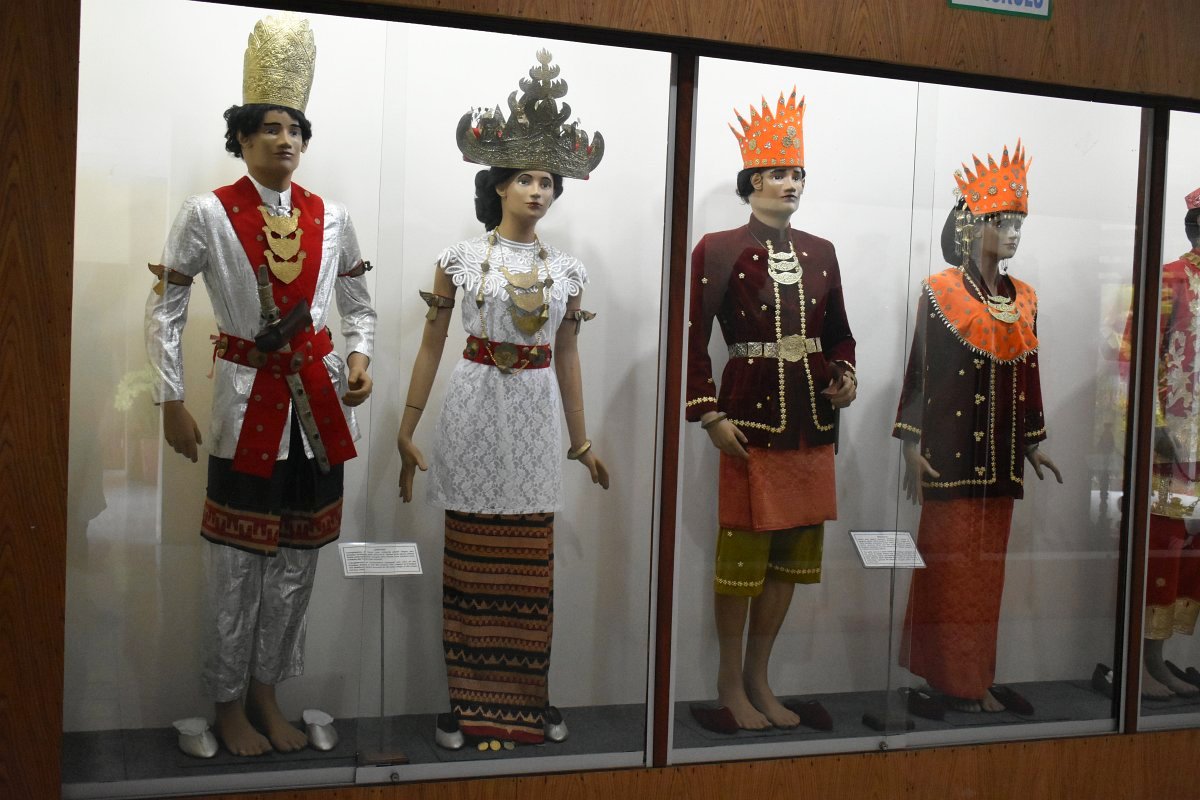
The highlight for us was the second building, which can best be labelled as "Idols and beliefs". This is the first museum we've been to, dedicated to pagan beliefs, pre-Buddhism/Christianity, black magic and voodoo. Our guide, a young man, seemed to consider the topic as factual rather than folklore. This was also in line with the museum's exhibit tone, presenting magic and spirits as real aspects of life. The small hall was very educational and entertaining - reading about the good and bad forces and how people interact with them. Protectors like the "walut", simplified human figures made of wood, guard homes and gardens for the small price of the occasional gift, like a cigarette or some tobacco. You can also see a small magic boat, used to instruct one's ancestors to torture and kill an enemy.
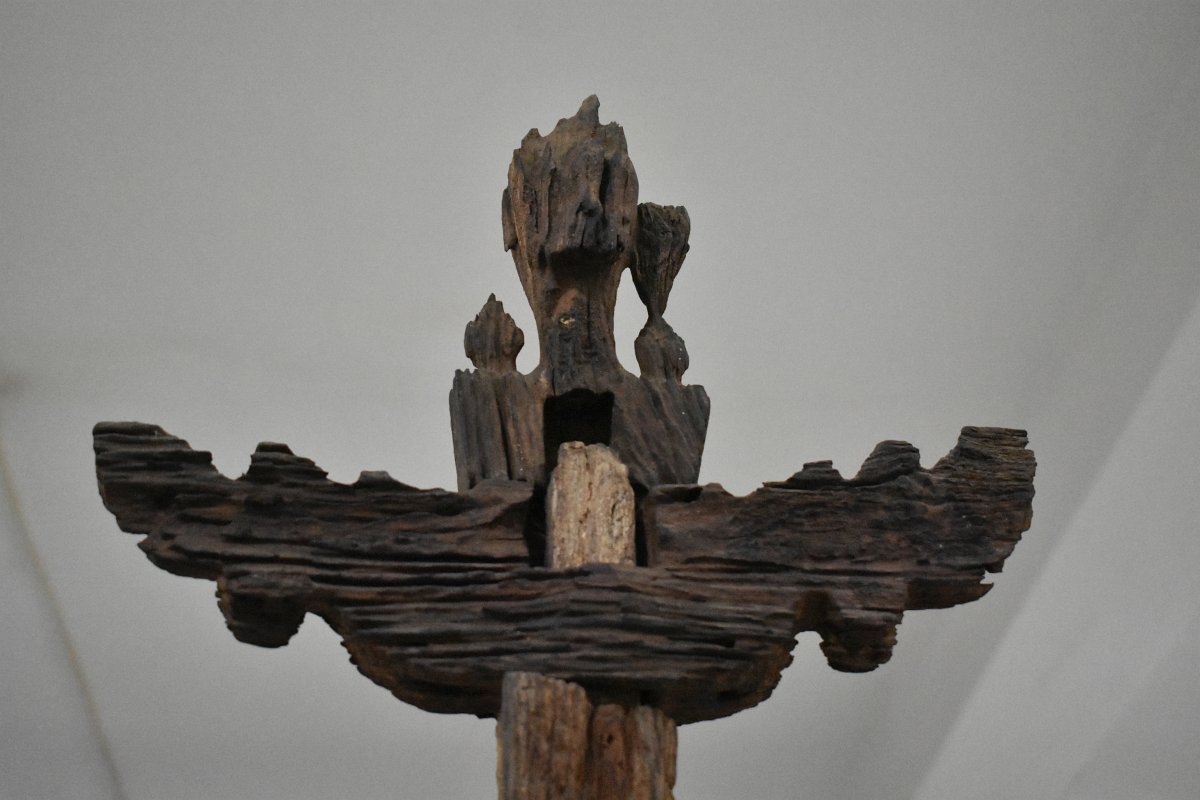
Third and last is a large hall dedicated to marine life and techniques for catching it. Several skeletons of whales grab the visitor's attention immediately, the largest one is a blue whale, 23 meters long. Around them is a wide array of fishing contraptions and boat types on display, interesting and informative. This is also the home of a huge taxidermied crocodile, who terrorized a fishing village and managed to eat 10 people before getting caught.
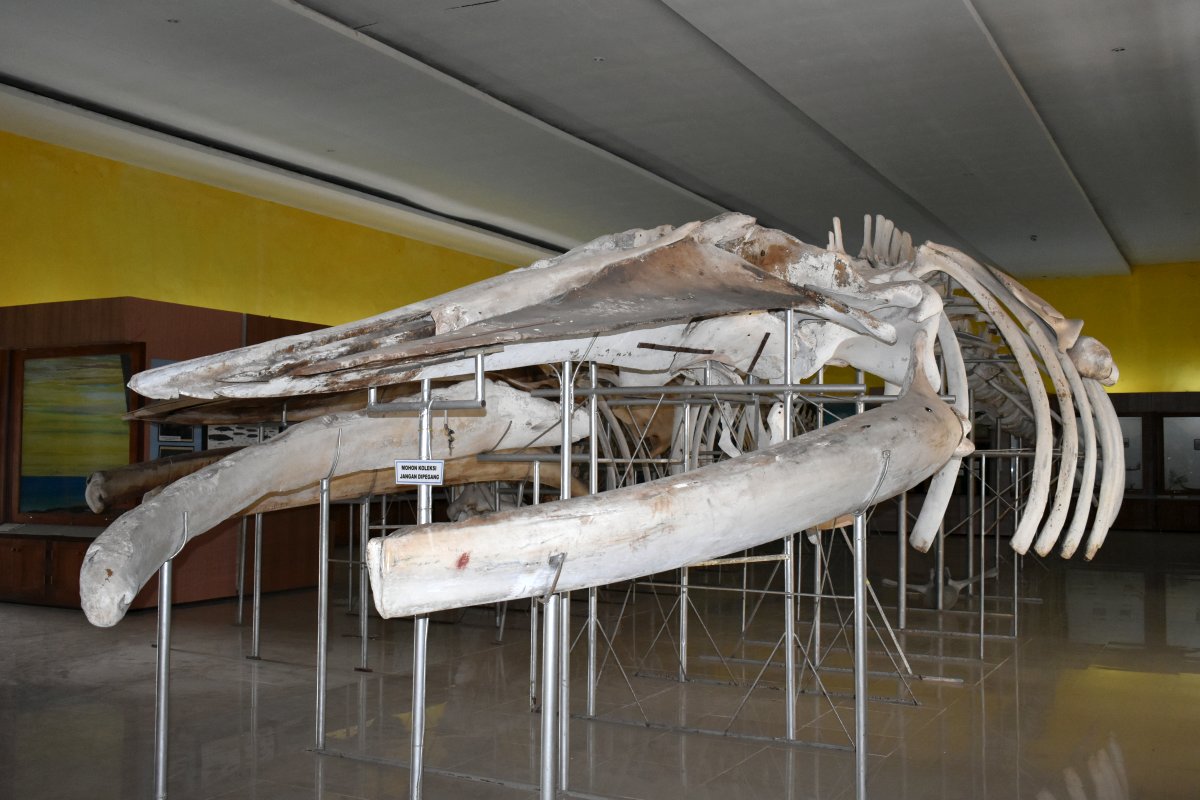
We loved the museum, spent almost 2 hours there and recommend dedicating one hour as a bare minimum to enjoy it. Don't forget the outdoor exhibits - there are some kora-kora boats and guns from colonial times.
Pantai Tanjung Nusaniwe and Santai Beach
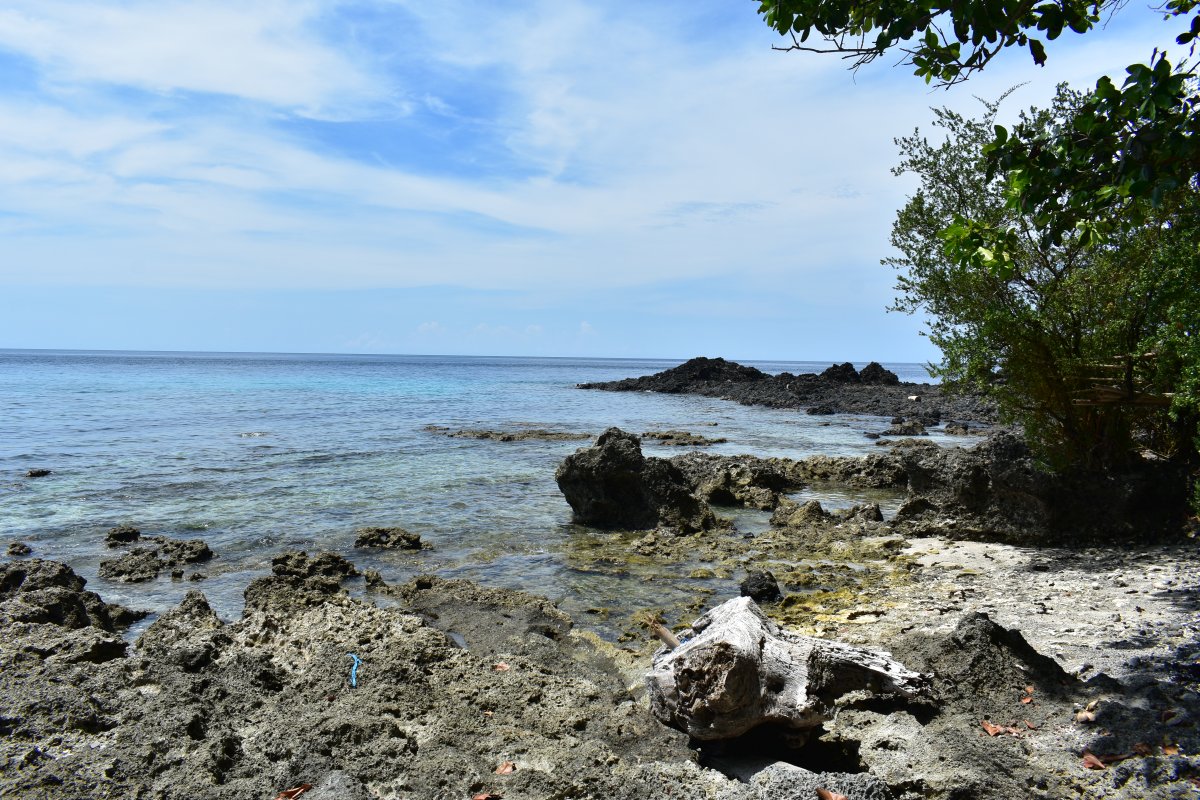
Heading south-west we reached the corner of the island - Pantai Tanjung Nusaniwe, which is a slightly underwhelming scenic area. Not much to do there except relax in the palm trees shadows and watching the water relentlessly trying to smoothen the sharp rocks.
Pulling back north-east we stopped at Santai Beach. It is a small beach and there were just a couple of local kids splashing in the water, but judging by the size of the parking lot and the great number of picnic tables and gazebos, I assume on weekends, it is very popular with the locals.
Along the route today
This part of the island has the highest concentration of Christians, so travelling there in December was interesting. I got the feeling that every Christian family had some kind of a decorated tree on a very public display - some in the yards, but many out on the roads. Old tyres, mosquito nets, traditional decorations or just anything shiny and colourful that can be used was turned into what felt more like a statement than anything else.
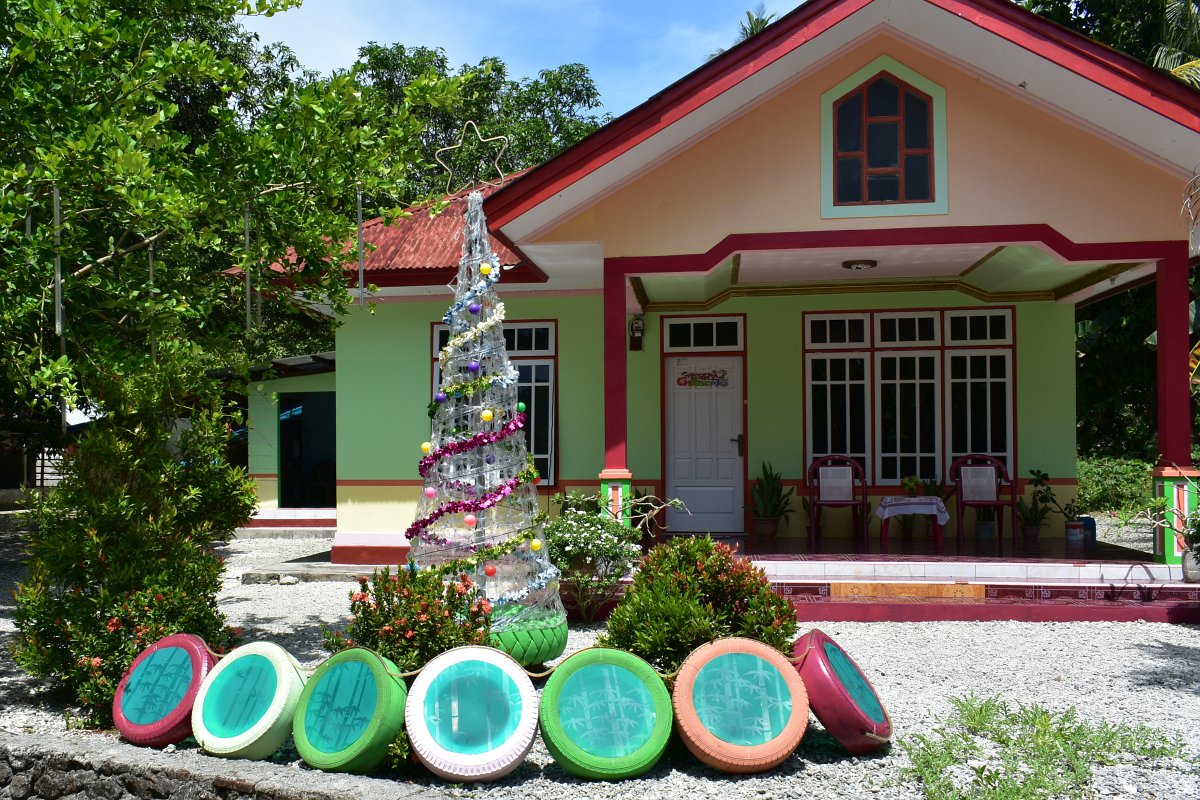
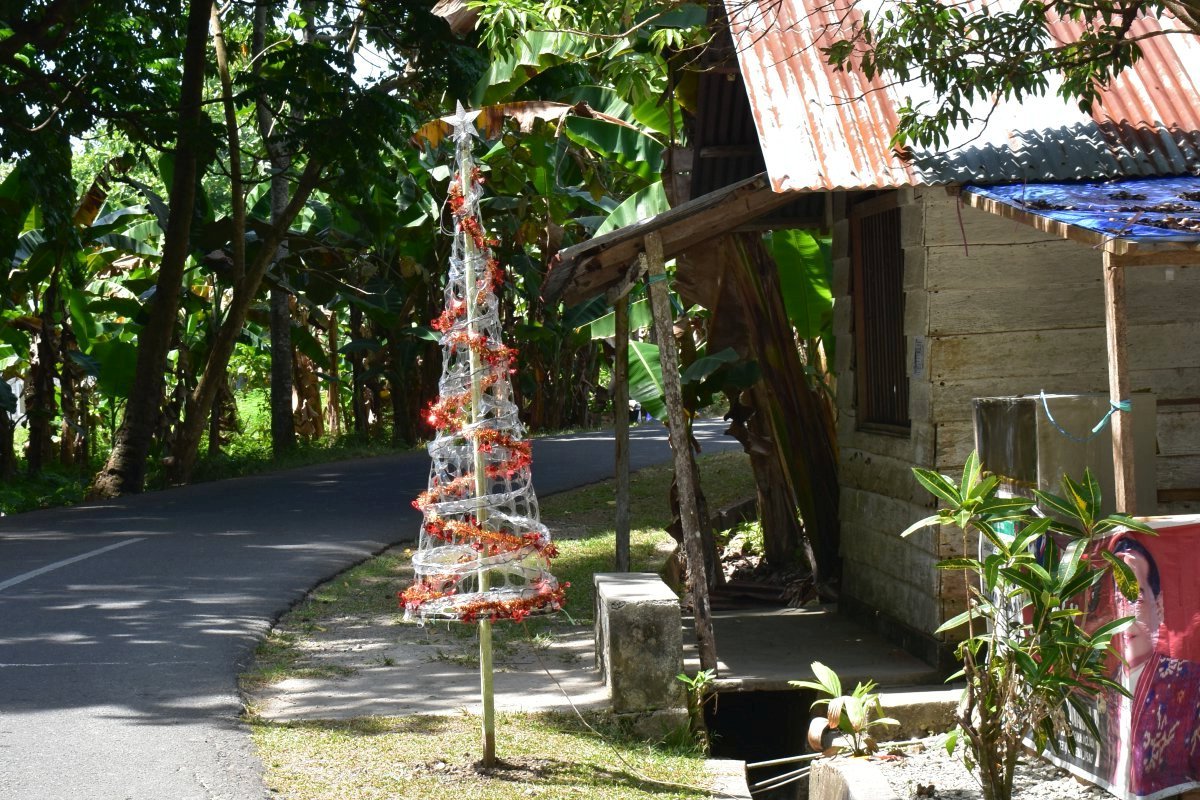
Pintu Kota Beach
Continuing in the same direction we reached one of the main highlights of Ambon, the famous arch of Pintu Kota.

Totally worth a visit, the place is beautiful and everyone will be tempted to snap some (or lots) of photos. Strangely, there was nobody else at this popular stop, so we made the most of it. There are a lot of rocks in the water, but after getting past them one can enjoy a good swim. The tree line is very close to the beach and the thick shade makes it great for relaxing.
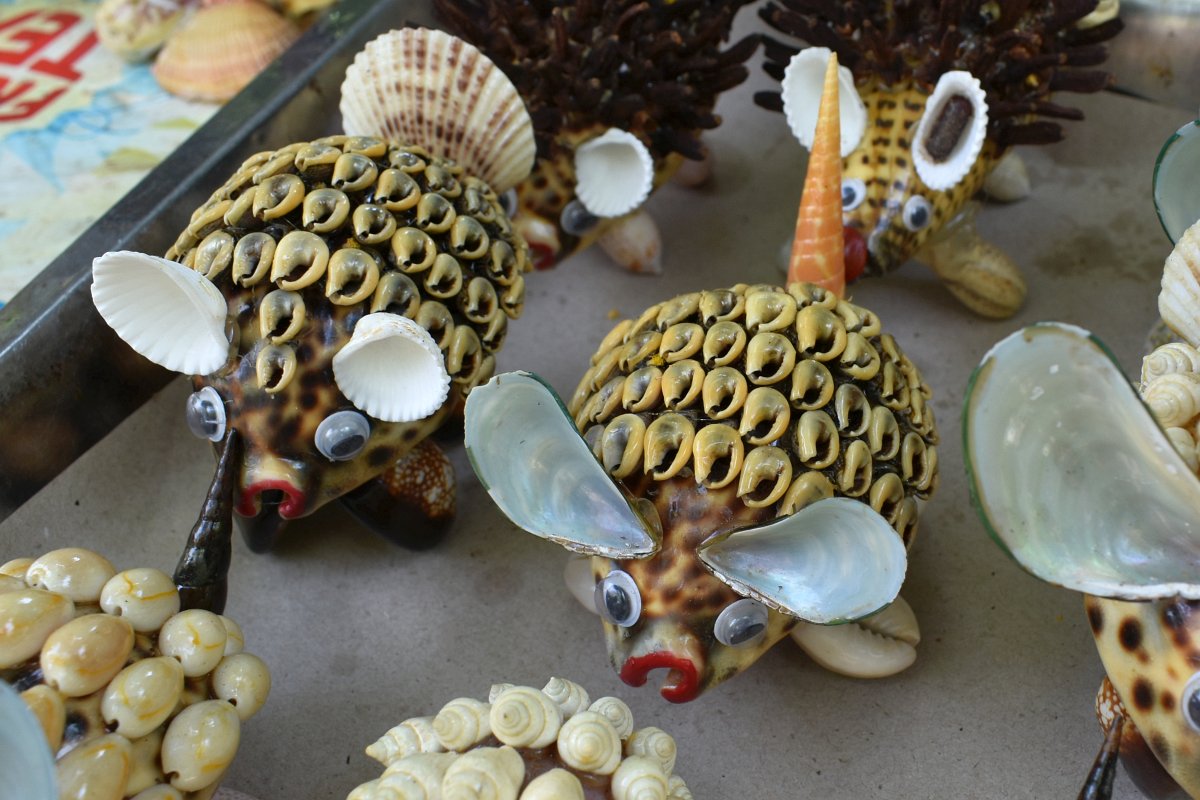
After an hour of swimming, we climbed the path to the top where we drank the classic beach refreshment - fresh coconut. The small cafe sells some seashells hand made souvenirs, that can be called both kitsch and cute.
Namalatu Beach
Next stop along the coast was Namalatu Beach, or that's what Google Maps told us. Dead wrong, couldn't even head back to Ambon from there, because part of the road shown on the map doesn't exist. The location on Google Maps for Namalatu beach is wrong, the real beach is actually at Namalatu Beach Resort, close to Santai. Very rocky stretch with no sand, Namalatu is far from attractive, but the detour gave us the opportunity to buy some banana pancakes for a quick snack before heading back to the city.
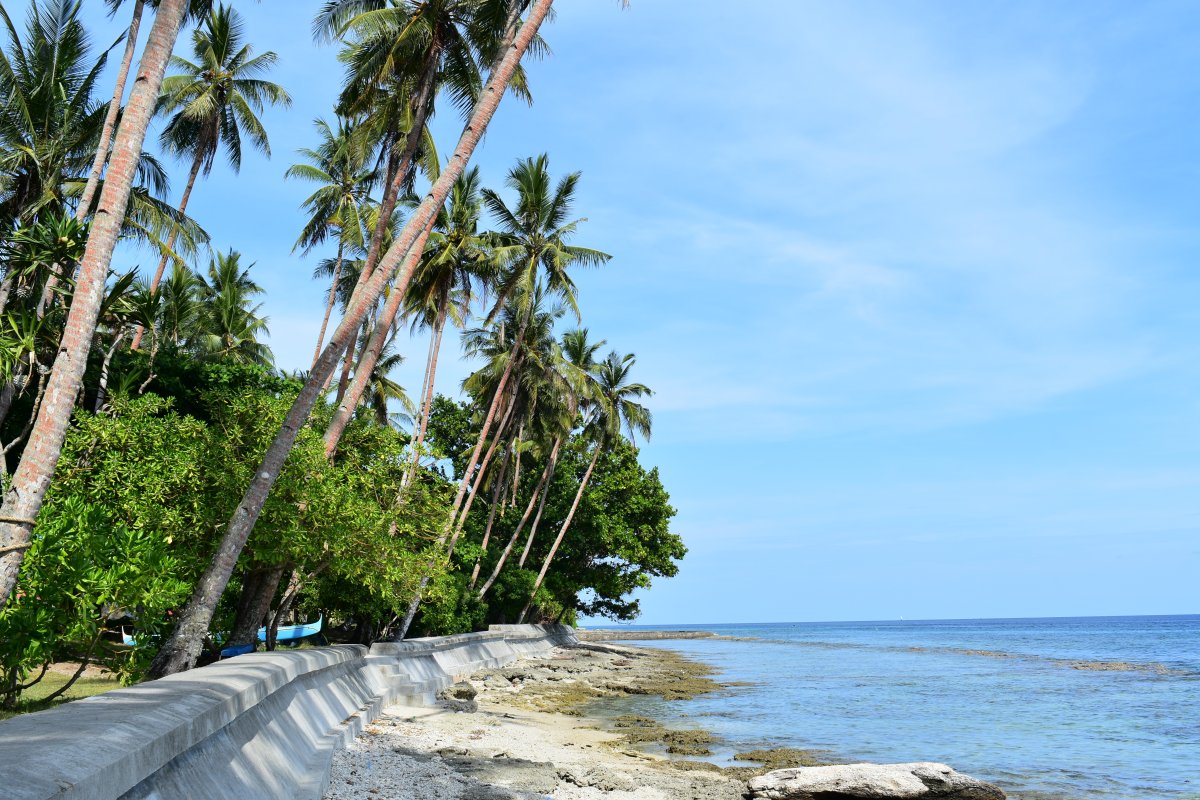
On the way back to the hotel we stopped at the two big mosques in the city centre - The Green Mosque and Al-Fatah Mosque, both are very impressive on the outside and inaccessible for non-muslims on the inside.

Comments